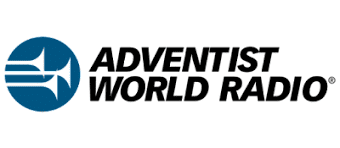Or maybe more accurately, from two lighthouses to two ships, with a detour in between.
The earliest known usage of the international callsign VLC can be traced back to the year 1913 at the time when the coastal radio station in the Chatham Islands was opened for maritime traffic and for contact with New Zealand. There was a strong light on one of the antenna towers, and this was used as a beacon for ships traversing the coastal areas.
In 1929, the callsign of Chatham Radio was changed from VLC to ZLC, and the next usage of this recycled callsign was at the lighthouse on Tasman Island, out from Hobart off the coast of Tasmania.
It was in 1941 that a 50 kw. RCA transmitter was installed at Shepparton in Victoria for use by “Australia Calling” in its international shortwave service, and it was allotted the callsign VLC. These days, though, the Radio Australia usage of the call VLC is not for a transmitter, but rather it is the identification for a line feed from the studios in Melbourne to a 100 kw. transmitter at the same radio base in Shepparton.
It is very interesting to note that the Australian callsign VLC was incorporated into an American callsign for a radio broadcasting station built into a renovated old ship. The American vessel ìApacheî was taken to Sydney Harbor in 1944, where two transmitters were installed, one for mediumwave and one for shortwave, and both at 10 kw. This ship made its first broadcasts off the coast of the Philippine Islands on October 20, 1944 under the callsign WVLC.
There is a reason for this unusual, as it were, double callsign. The American transmitter that was installed at Shepparton was made available to Australia on a “lendlease” basis, with the understanding that this unit, VLC, would relay “Voice of America” programming to the Philippines for one and a half hours each day. Thus it was that “Australia Calling” acted as a part time relay station for the “Voice of America,” specifically with the program “The Philippine Hour.”
When the radio ship “Apache” was off the coast of the Philippines, the relay of this “Voice of America” radio program was transferred from VLC in Australia to the “Apache” under the American callsign WVLC.
However, a few months later another radio ship from America, the “Spindle Eye“, arrived in the western Pacific, and the WVLC callsign was transferred from the “Apache” to the “Spindle Eye.” A few months later again, the “Spindle Eye” returned to the California coast and the usage of the WVLC callsign was dropped.
These days there are many known QSL cards identifying the VLC callsign as used by Radio Australia, and at least a dozen QSL letters confirming reception of WVLC on the “Apache” are known to exist. However, there are no other known QSLs for the other usages of the recycled callsign VLC.
Just as a matter of interest, the Australian callsign VLC does not seem to be in use these days, and the American callsign WVLC is held by a 25 kw. FM station on 99.9 MHz in Louisville, Kentucky.
From: Wavescan 467, December 14, 2003
 “Wavescan” is a weekly program for long distance radio hobbyists produced by Dr. Adrian M. Peterson, Coordinator of International Relations for Adventist World Radio. AWR carries the program over many of its stations (including shortwave).
“Wavescan” is a weekly program for long distance radio hobbyists produced by Dr. Adrian M. Peterson, Coordinator of International Relations for Adventist World Radio. AWR carries the program over many of its stations (including shortwave). 